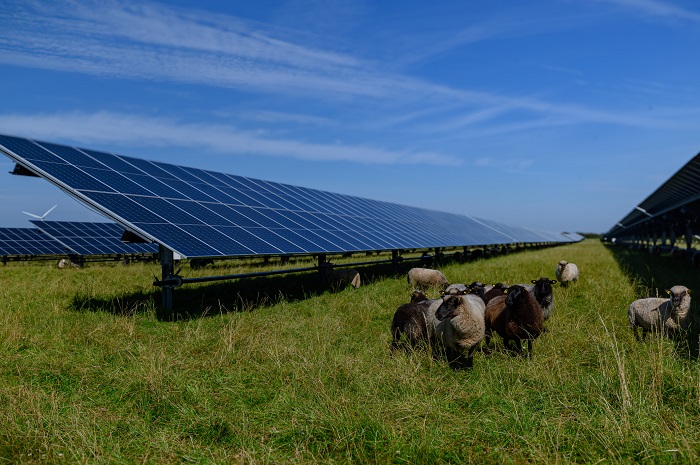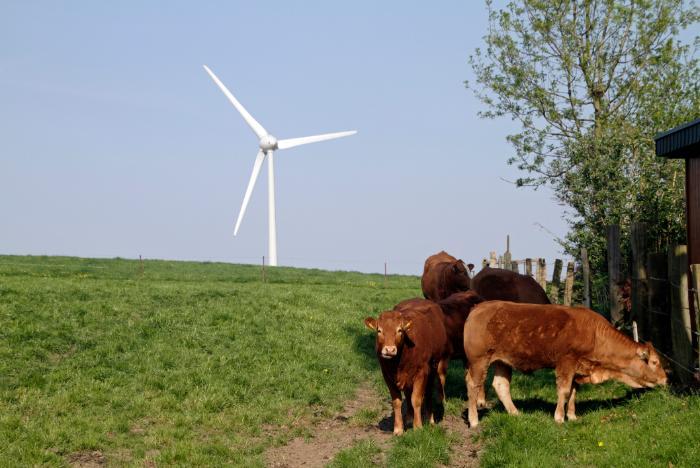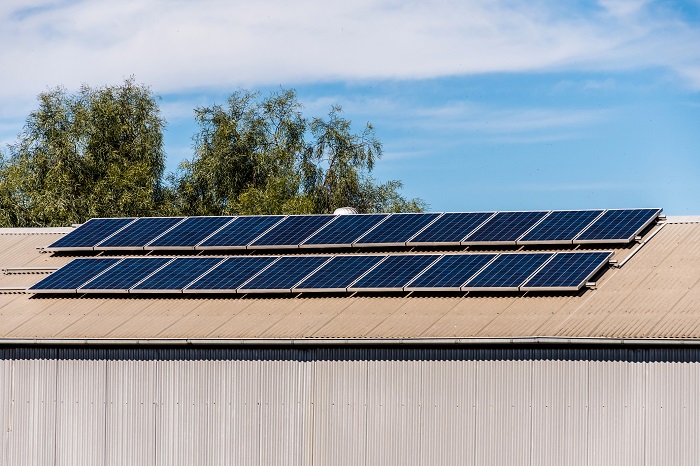19 February 2025
Harvesting renewable energy with SRESS

Energy and Rural Development Specialist at Teagasc, Barry Caslin outlines the key decisions farmers have to make to maximise their investment’s potential under the Small-Scale Renewable Electricity Support Scheme (SRESS).
What is SRESS?
The Irish Government has started a new programme called the Small-Scale Renewable Electricity Support Scheme (SRESS). It helps small renewable energy projects, like solar and wind, get off the ground. Farmers can apply to join this programme since January 27, 2025, and it’s a chance to invest in renewable energy and diversify their income.
Focus on solar and wind
SRESS is all about supporting small solar and wind projects in Ireland, exporting to the grid. It covers projects that produce between 50kW and 6MW of electricity. The scheme uses a special payment system where you get money when electricity prices are low and your supplier pays into a government fund when prices are high.
How tariffs work
SRESS guarantees payments, known as tariffs, for the electricity you produce. If you’re accepted, you’ll get a letter that lets your electricity supplier access support through a government fund called the Public Service Obligation levy (PSO) via a Power Purchase Agreement (PPA).
SRESS tariffs have been set across six categories – three community rates and three SME rates, covering both solar and wind. Farmers are eligible for supports under SRESS on the same basis as SMEs. Community tariffs are the highest, because they have more hurdles to overcome, like planning and financing. Smaller projects (50kW to 1MW) get the best rates, while larger solar projects (1MW to 6MW) get less. Wind projects get the same rate no matter their size. The programme runs until 2030, with a 15-year guarantee on tariffs for successful projects.
SRESS volumes for each category of tariff have been set at the limits detailed on the Department’s website. Once the volume for a specific category has been reached, the application window for that category will close, and future tariff rates and further capacity limits will be considered.
Community projects
SRESS encourages Renewable Energy Community projects, which means people working together locally to engage in renewable energy generation. To be a Renewable Energy Community project, there needs to be local ownership and control so the benefits stay in the community. These projects have to meet certain standards and be open about their decisions. Community projects get higher tariffs because they face more challenges. This setup helps rural areas become more energy independent and resilient.
Another avenue for participation in SRESS for farmers is leasing land to either SRESS community applicants or to SME applicants. Farmers themselves can also be members of a Renewable Energy Community.
Key considerations
When you join the SRESS scheme, you’ll get paid through a Power Purchase Agreement (PPA) with a supplier. This is a contract that outlines how you’ll sell your electricity. Remember, while there are rules about how these contracts work, switching suppliers isn’t easy. It’s smart to get quotes from different suppliers before deciding. The price you agree on might not match exactly with the tariffs you see published, because suppliers have their own costs, like managing contracts when the system has issues or prices drop too low.
It’s important to figure out how long it will take to earn back your investment in a SRESS project. This depends on things like how close you are to an ESB substation, planning costs, and the size of your project. Having a good accountant, solicitor and renewable energy advisor is important to help with ownership, taxes, and any legal issues, especially if you’re passing the land on to future generations.
The SRESS programme works on a first-come, first-served basis, so it’s important to act quickly. All applicants are required to have planning permission prior to applying for SRESS. Farmers and SMEs are also required to submit proof of Grid Connection Agreement at application stage. The terms and conditions and a non-technical guide are available on the Department of Environment, Climate and Communications (DECC) website, so know what you’re getting into. The terms and conditions and/or tariff rates will be reviewed after three years or before if volumes caps have been reached.
There are challenges, like getting access to the grid, dealing with ownership rules, and risks from market prices. These might make small wind projects harder to succeed, and there’s also a difference in support between wind and solar, which could affect community wind projects. Understanding these issues is key if you’re thinking about joining SRESS.

How the two-way FiP works
The Feed-in-Premium (FiP) is the support system for those producing renewable electricity. Instead of getting a fixed price for your electricity, the FiP adds extra money, called a premium, on top of the regular market price. This way, you have a guaranteed income, combining the market price with this premium.
- When Prices Are Low: You receive extra money from your supplier to cover the gap between the low market price and your guaranteed income.
- When Prices Are High: Any extra money made goes into the Public Service Obligation (PSO) levy fund. This is paid in by the supplier, not the applicant.
Understanding the electricity market
The electricity market can change quickly due to outside influences, like world events. For example, the conflict in Ukraine affected the supply of natural gas in Europe. Since Ireland uses a lot of gas to produce electricity, this disruption caused electricity prices to go up because gas prices soared.
When gas prices rise, electricity becomes more expensive, impacting everyone from producers to consumers. For those in the SRESS scheme, if market prices go above the fixed tariffs, the extra money goes into the PSO levy. This helps keep the energy system stable by using the extra profits to support it.
On the flip side, if prices go down, it’s good news for consumers and businesses because it makes energy cheaper. But for SRESS participants, this is where the two-way FiP is important. It ensures you still earn a stable income even when prices drop due to events like geopolitical changes. When prices are low, the PSO levy covers the gap between the market price and your guaranteed tariff.
Table 1: SRESS Tariff Rates
| Technology & Scale | Farm and SME Tariff | Community Project Tariff |
|---|---|---|
|
Solar PV (50kW to 1MW) |
€0.13/kWh | €0.15/kWh |
|
Solar PV (1MW to 6MW) |
€0.12/kWh | €0.14/kWh |
|
Wind (up to 6MW) |
€0.08/kWh | €0.09/kWh |
Steps to get involved
Assess your site
Start by assessing your site to determine its suitability for a renewable energy project. Consider how close your land is to grid connections, like ESB substations, since proximity can make your project more cost-effective. You can contact ESB Networks or visit their website to find out about grid capacity in your area. It’s also essential to investigate any planning permissions required, such as environmental assessments or local authority approvals, and begin this process early to avoid potential delays. Evaluate the physical characteristics of your land, such as its topography, wind patterns, and solar exposure, as these factors will influence the type and size of the project you can implement.
1). Understand costs and returns
Next, it’s crucial to understand the costs and potential returns of your project. Start by estimating the total upfront costs, including equipment, installation, grid connection, and planning fees. Be sure to factor in ongoing operational and maintenance costs, such as routine maintenance and insurance. Calculate the expected revenue based on the tariff rate and projected energy generation, taking into account variables like seasonal changes and potential downtime. Consider engaging renewable energy experts to help with financial planning, risk assessment, and negotiating agreements.
2). Engage with suppliers
Begin engagement with suppliers in advance of applying to SRESS to secure your payments. Identify potential suppliers with a strong track record in renewable energy and request proposals tailored to your project’s specifics. Review these proposals carefully, considering factors such as tariff rates and contract terms. Negotiate the Power Purchase Agreement (PPA) terms with your preferred supplier, ensuring the agreement aligns with your financial goals and risk tolerance. Throughout the process, seek legal and financial advice to ensure clarity and proper documentation.
3). Apply for SRESS
Once your project is planned, with planning permission and Grid Connection Agreement in place, apply for SRESS to secure the tariff benefits. Gather all necessary documentation, such as detailed project plans and financial models, and ensure your project meets the eligibility criteria. Completed application forms must be returned to sress@decc.gov.ie . If your application is successful, you’ll receive a letter of offer confirming your project’s acceptance into the scheme. With this letter, you’ll finalise the PPA with your preferred electricity supplier to formalise the tariff arrangement and ensure you receive financial support.
Examples of understanding how tariff rates work
For a 200kW wind turbine, the total costs, including grid connection and planning, could range from €600,000 to €1 million. Assuming an installation cost of €800,000 and a capacity factor of 28%, this turbine can generate about 490,560 kWh annually. With a guaranteed tariff rate of €0.08 per kWh, that results in an annual income of €39,245. The basic payback period would be around 20 years, extending to over 26 years when including financing costs. This example emphasises the need to evaluate site-specific factors and financial considerations carefully.
Now, consider a 1MW wind turbine on a farm. Typically, it can generate about 2.5 million kWh per year with a capacity factor of 28%. At the SRESS tariff of €0.08/kWh, the annual income would be approximately €196,224. With installation costs between €1.3 million and €1.5 million, the payback period is about 7.1 years. However, grid connection and financing costs may extend this timeframe.
For a 5MW solar project, covering 20-30 acres and producing around 5,694 MWh annually with a 13% capacity factor, the income would be about €683,280 at a €0.12/kWh tariff. With total costs estimated at €5.4 million, the payback period is roughly 7.9 years, though grid connection costs can affect this.
Other options
Under SEAI’s Non-Domestic Microgen Grant, grants are available for renewables self-consumers including farmers above 50 kW and up to 1 MW. Renewables self-consumers are electricity customers who produce renewable electricity for their own use. They may then sell or store any excess electricity that they produce, if electricity generation is not their primary business.

For farms that cannot make a renewable export project work, there is the Department of Agriculture, Food and the Marine’s TAMS 3 Solar Capital Investment Scheme (SCIS). SCIS provides grant support to farmers wishing to invest in solar installations generating renewable electricity for farm self-consumption, reducing their dependence on fossil fuels. This scheme provides grant aid of 60% with a ring-fenced ceiling particular to this solar TAMS, of €90,000.
Conclusion
The SRESS scheme provides an opportunity for farmers to diversify their income through renewable energy projects at appropriate sites. However, success depends on thorough planning and understanding of the financial landscape, including tariff rates, grid connection costs, and potential incentives.
Project development must be fairly advanced to be eligible for SRESS. All applicants are required to have planning permission prior to applying for SRESS. Farmers and SMEs are also required to submit proof of Grid Connection Agreement at application stage.
By carefully evaluating site-specific factors and seeking guidance from financial and legal experts, farmers can make informed decisions that maximise their investment’s potential.
